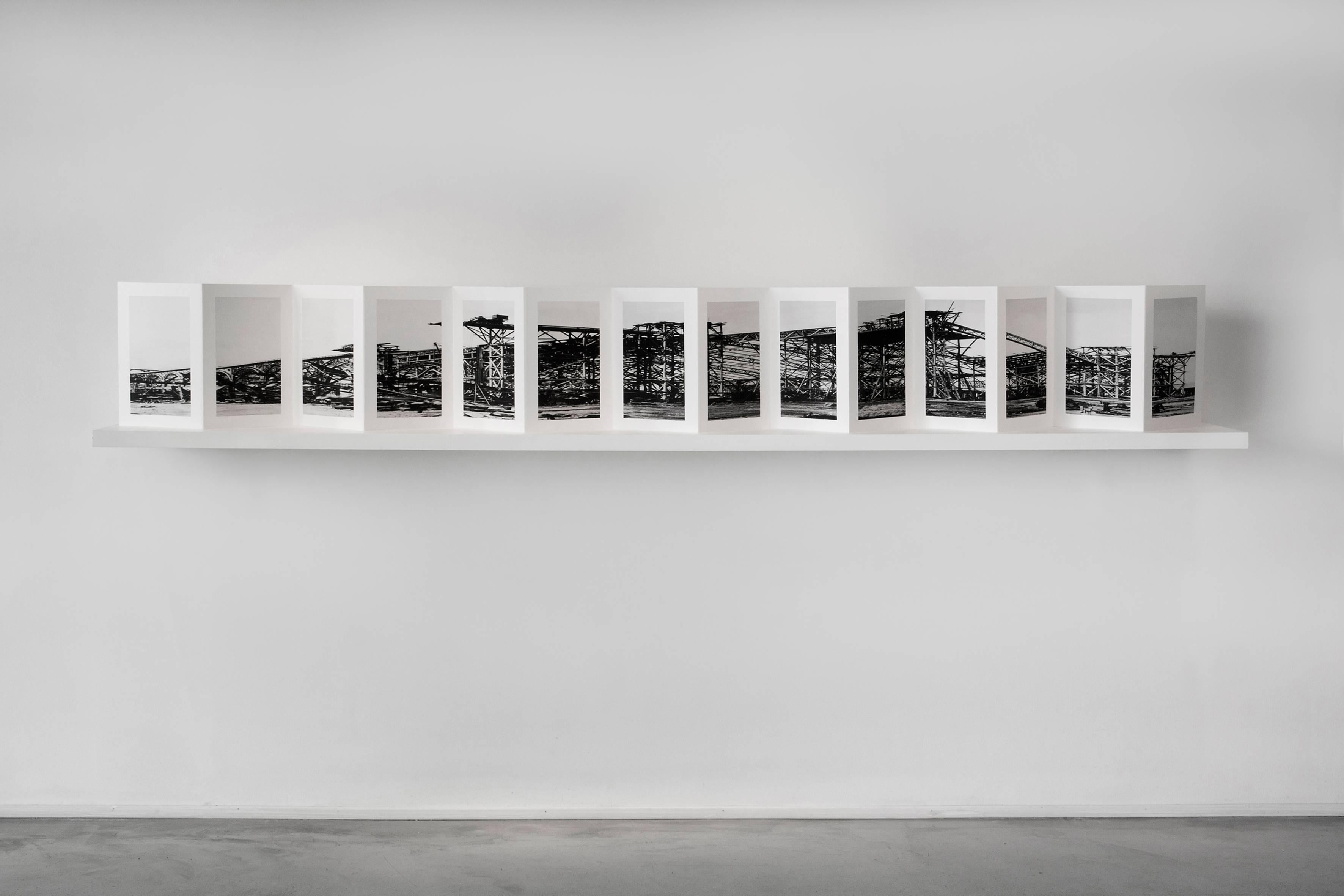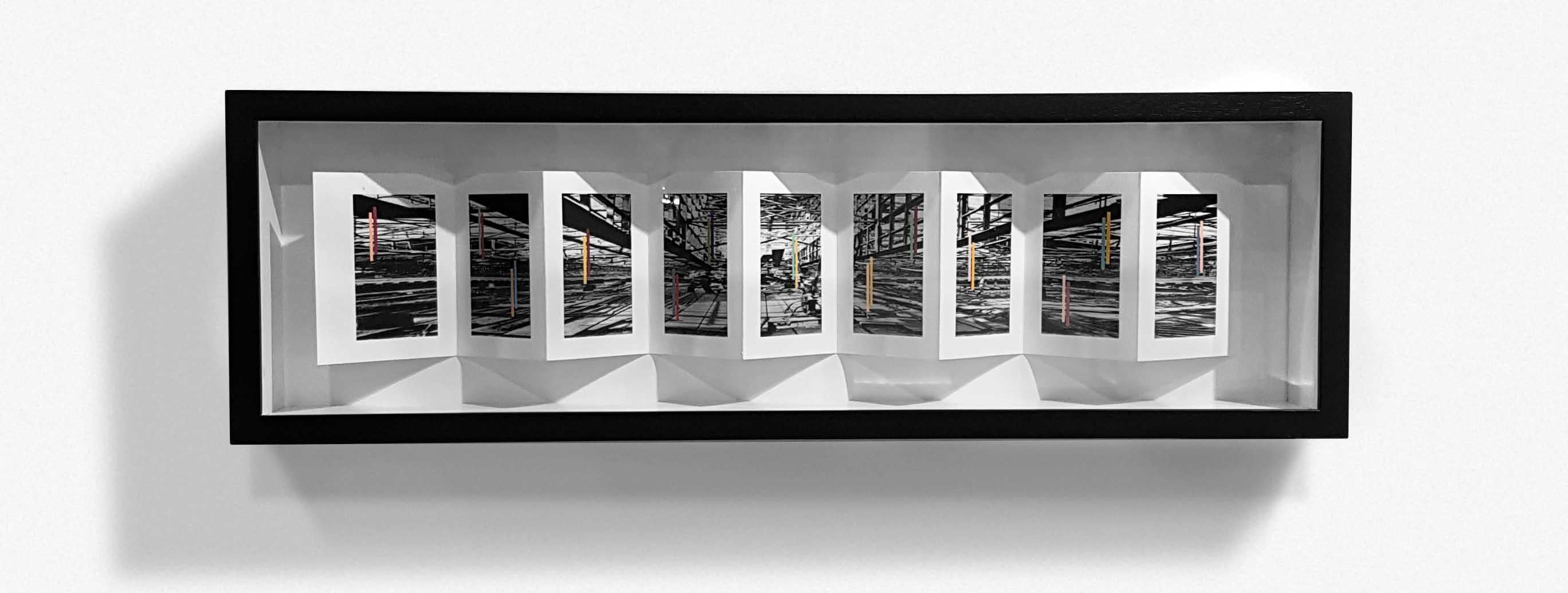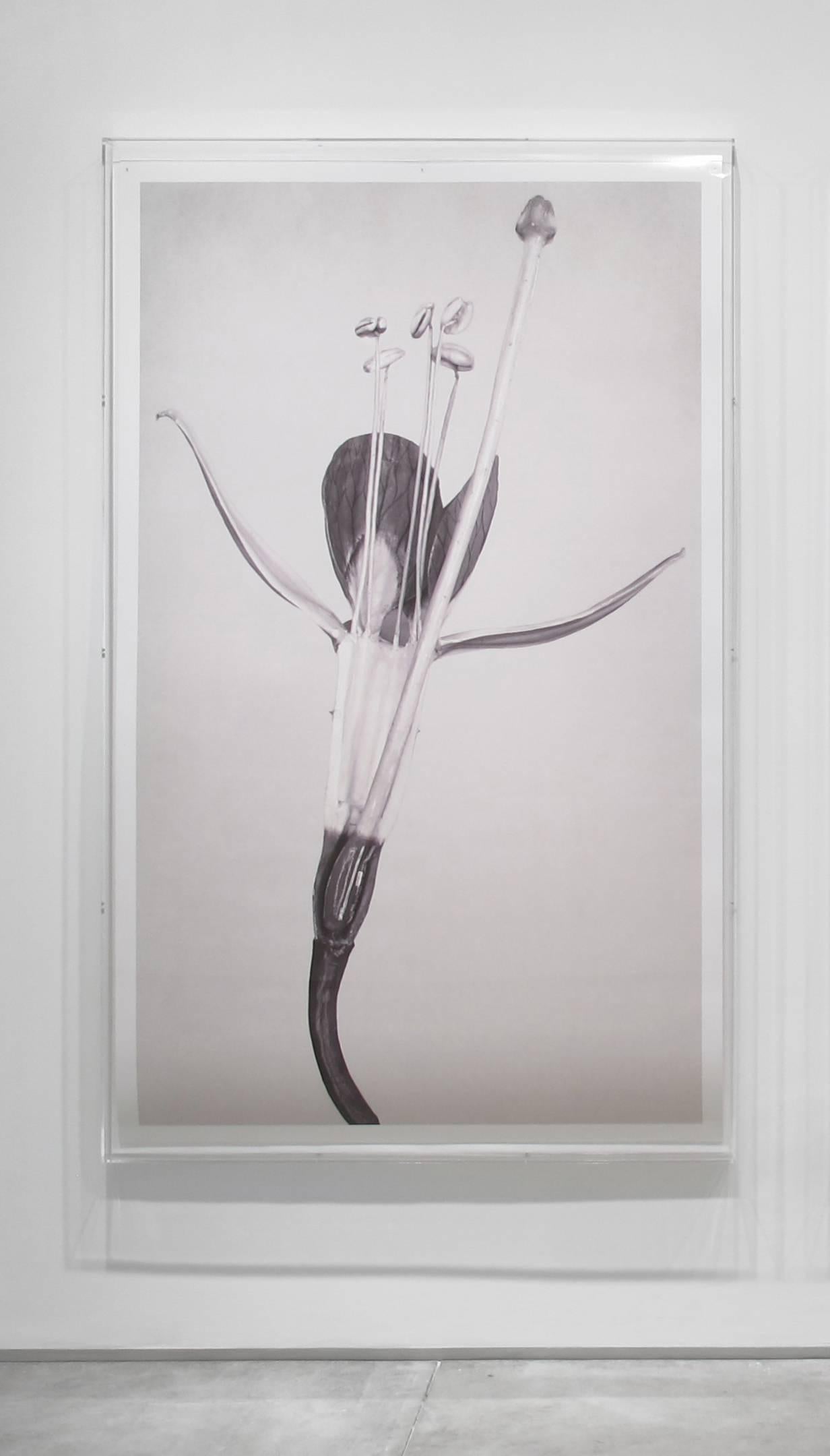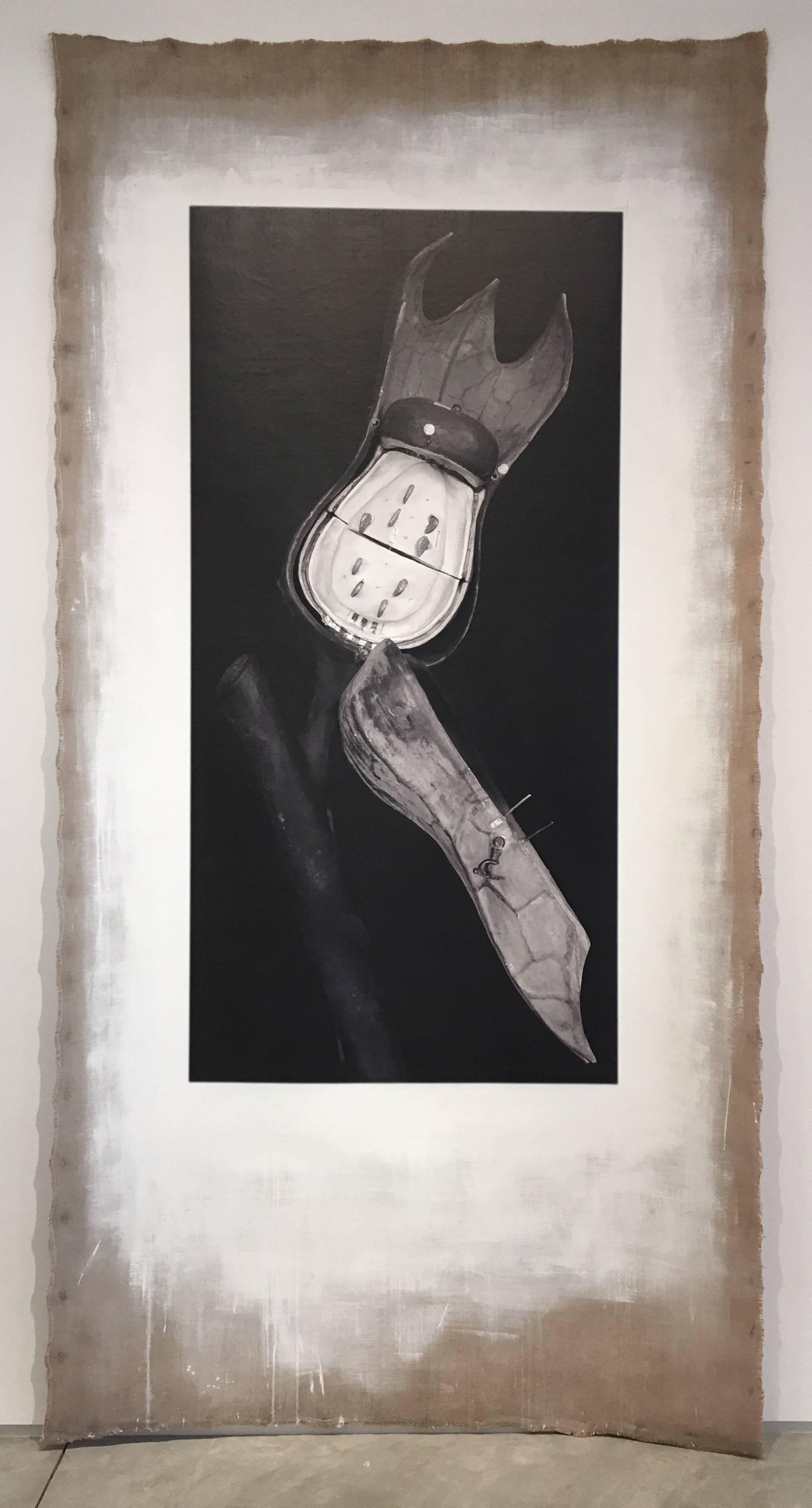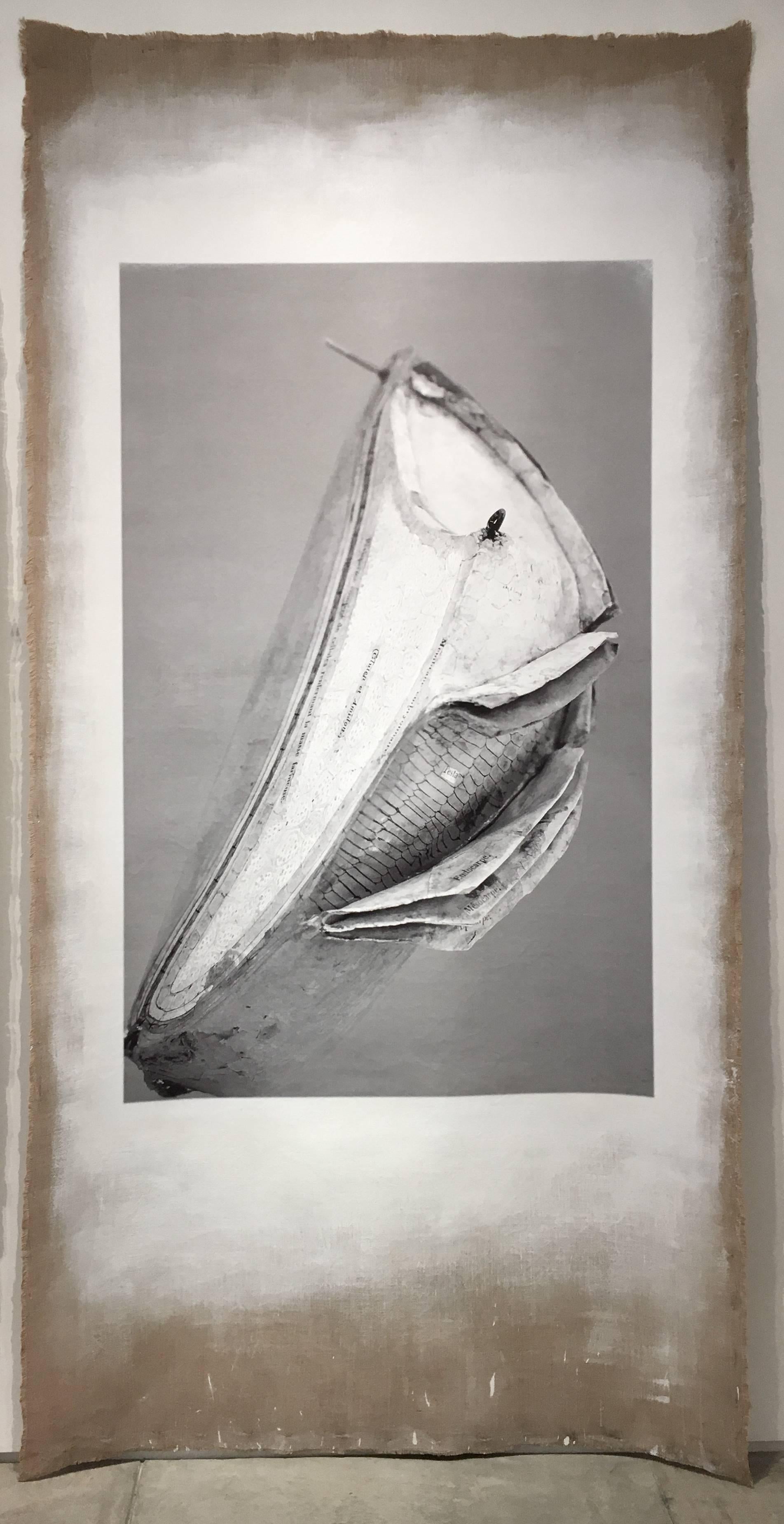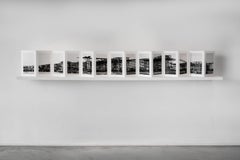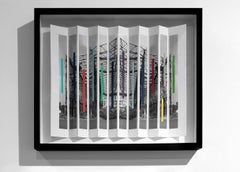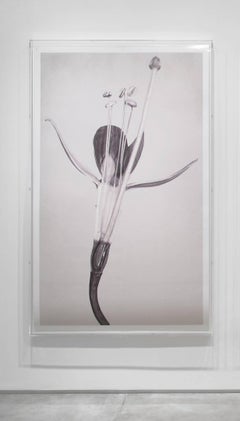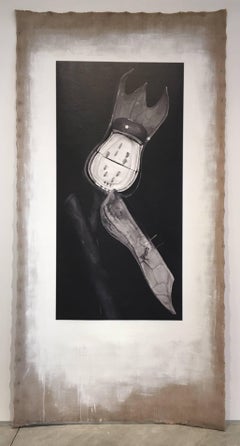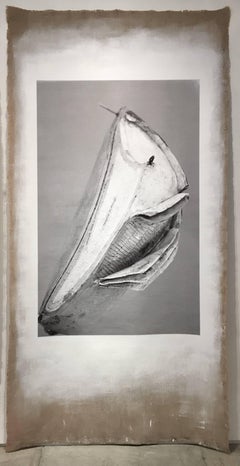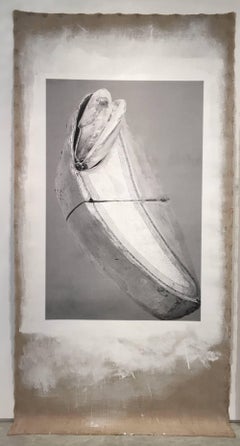Want more images or videos?
Request additional images or videos from the seller
1 of 2
Viviana ZargónPalais des machines plegado2015
2015
$2,000
£1,504.81
€1,738.09
CA$2,826.52
A$3,067.21
CHF 1,625.35
MX$37,617.80
NOK 20,113.58
SEK 19,006.27
DKK 12,975.73
About the Item
Palais des machines plegado, 2015
Digital photography printed on Hahnemuhle paper
9h x 35.50w x 3d in
Edition 2/5
Using photography as the starting point, Viviana Zargón constructs a pictorial universe of industrial imagination. In an exploration of abandoned empty spaces, Zargón portrays an exhaustion of hope as she incorporates traces of manufacturing artifacts from the Industrial era. Through the medium of photography and painting, Zargón creates a semantic configuration of reality as she reflects on the relationship between production, work, and social progress to greater understand the present.
Vivana Zargon was born in Buenos Aires in 1958. She Studied at the University of Barcelona, School of Fine Arts and was awarded the annual scholarship from Government of Catalunya, Spain given to young artists. She has been the subject of several solo exhibitions including : Galería Ruth Benzacar (Buenos Aires, 1985); Galería Julia Lublin (Buenos Aires, 1993); Brazil Art Space (Houston, Texas, USA , 1995); Galleria Banchi Nuovi (Roma, Italia, 1996); Filo Espacio de Arte (Buenos Aires, 1997); Sicardi Sanders Gallery (Houston, Texas, USA, 1998); Centro Cultural Borges (Buenos Aires, 1998); Galería Arteconsult (Panamá, 2005, 2009, 2012); Museo Calderon Guardia (San Jose de Costa Rica, 2006); Gachi Prieto Gallery (Buenos Aires, 2011); Museo de Arte Contemporáneo (Lima, 2015); Aluna Art Foundation (Miami, 2015); Galeria Lucía de la Puente (Lima, 2015). She has also taken an active part in many collective exhibitions at museums, galleries and institutions: Museo de Arte Moderno de Buenos Aires; Fundación Joan Miró, Barcelona; Museo Caraffa, Córdoba; Museo Nacional de Bellas Artes, Bs As; Museo Eduardo Sívori, Bs As; Centro Cultural Recoleta, Bs As; Museo de Arte Contemporaneo de Puerto Rico; Museo de Arte Moderno de Rep. Dominicana; Museo de Arte Contemporaneo de Panamá; Latino Museum of History Art and Culture; Los Ängeles, EEUU, among others. Zargon’s works are in the permanent collections of Museo de Arte Moderno, República Dominicana; Museo de Arte Moderno de Puerto Rico; Museo de Arte Contemporáneo de Panamá; Museo de Arte Contemporáneo de Cuzco y Museo de las Matemáticas, Comuna de Roma, Roma, Italia
- Creator:Viviana Zargón (Argentinian)
- Creation Year:2015
- Dimensions:Height: 9 in (22.86 cm)Width: 35.5 in (90.17 cm)Depth: 3 in (7.62 cm)
- Medium:
- Period:
- Condition:
- Gallery Location:New York, NY
- Reference Number:1stDibs: LU59632991921
About the Seller
5.0
Vetted Professional Seller
Every seller passes strict standards for authenticity and reliability
Established in 2012
1stDibs seller since 2017
24 sales on 1stDibs
- ShippingRetrieving quote...Shipping from: New York, NY
- Return Policy
Authenticity Guarantee
In the unlikely event there’s an issue with an item’s authenticity, contact us within 1 year for a full refund. DetailsMoney-Back Guarantee
If your item is not as described, is damaged in transit, or does not arrive, contact us within 7 days for a full refund. Details24-Hour Cancellation
You have a 24-hour grace period in which to reconsider your purchase, with no questions asked.Vetted Professional Sellers
Our world-class sellers must adhere to strict standards for service and quality, maintaining the integrity of our listings.Price-Match Guarantee
If you find that a seller listed the same item for a lower price elsewhere, we’ll match it.Trusted Global Delivery
Our best-in-class carrier network provides specialized shipping options worldwide, including custom delivery.More From This Seller
View AllPlegado de scompte 2
By Viviana Zargón
Located in New York, NY
Plegado de scompte 2, 2017
Digital photography printed on Hahnemuhle paper
8h x 40w in
Edition 3/5
Unframed
Using photography as the starting point, Viviana Zargón constructs a pic...
Category
2010s Landscape Photography
Materials
Digital
Plegado de scompte 2
By Viviana Zargón
Located in New York, NY
Plegado de scompte 2, 2011
Digital photography printed on Hahnemuhle paper
9.25h x 40.94w in
Edition 2/5
Using photography as the starting point, Viviana Zargón constructs a pictor...
Category
2010s Black and White Photography
Materials
Digital
Scompte Series
By Viviana Zargón
Located in New York, NY
Digital photography printed on Hahnemuhle paperh 8 x 25.50 w in
Edition 1/5
Using photography as the starting point, Viviana Zargón constructs a pictorial universe of industrial im...
Category
2010s Contemporary Landscape Photography
Materials
Paper, Digital
Tren de la Costa series
By Viviana Zargón
Located in New York, NY
Digital photography printed on Hahnemuhle paper
18h x 27w in
Edition 1/5
Using photography as the starting point, Viviana Zargón constructs a pictorial universe of industrial imagi...
Category
2010s Contemporary Landscape Photography
Materials
Paper, Digital
Pleagado de Grand Palais
By Viviana Zargón
Located in New York, NY
Digital photography printed on Hahnemuhle paper
Category
2010s Black and White Photography
Materials
Digital
Amarillos
By Viviana Zargón
Located in New York, NY
Viviana Zargón constructs a pictorial universe of industrial imagination in the exploration of abandoned and empty spaces. Using photography and painting as starting points, she fol...
Category
2010s Photography
Materials
Digital
You May Also Like
Art Forms in Mechanism XXlV
By Linarejos Moreno
Located in Houston, TX
Linarejos Moreno
Art Forms in Mechanism XXIV, 2016
Edition of 3 + 2 AP
archival digital print on Baryta paper
75 5/8 x 46 in (192 x 117 cm)
77 3/4 x 48 x 3 1...
Category
21st Century and Contemporary Contemporary Black and White Photography
Materials
Digital
Art Forms in Mechanism XXlll
By Linarejos Moreno
Located in Houston, TX
Linarejos Moreno
Art Forms in Mechanism XXlll, 2016
natural pigments print on gessoed burlap
117 x 60 inches
“Art Forms in Mechanism” began when artist Linarejos Moreno discovered a collection of 19th century botanical models while researching at the Cabinet of Scientific Curiosities, a Spanish historical archive. Manufactured by a European company that specialized in scientific equipment, the models are made of papier-mâché, gears, clips, hooks, and printed numbers and labels, and they were designed for hands on, practical use. Moreno was initially attracted to the models because, as she notes, “they contained the tension between the industrial and the humanity/fragility that I often research in my work. On the one hand, they were machines, with all their gears, on the other hand, even if they were supposed to be neutral scientific objects...
Category
2010s Contemporary Black and White Photography
Materials
Burlap, Archival Pigment
Art Forms in Mechanism XXll
By Linarejos Moreno
Located in Houston, TX
Linarejos Moreno
Art Forms in Mechanism XXll, 2016
natural pigments print on gessoed burlap
117 x 58 inches
“Art Forms in Mechanism” began when artist Linarejos Moreno discovered a collection of 19th century botanical models while researching at the Cabinet of Scientific Curiosities, a Spanish historical archive. Manufactured by a European company that specialized in scientific equipment, the models are made of papier-mâché, gears, clips, hooks, and printed numbers and labels, and they were designed for hands on, practical use. Moreno was initially attracted to the models because, as she notes, “they contained the tension between the industrial and the humanity/fragility that I often research in my work. On the one hand, they were machines, with all their gears, on the other hand, even if they were supposed to be neutral scientific objects...
Category
2010s Contemporary Black and White Photography
Materials
Burlap, Archival Pigment
Art Forms in Mechanism XXl
By Linarejos Moreno
Located in Houston, TX
Linarejos Moreno
Art Forms in Mechanism XXl, 2016
natural pigments print on gessoed burlap
124 x 59 inches
“Art Forms in Mechanism” began when artist Linarejos Moreno discovered a collection of 19th century botanical models while researching at the Cabinet of Scientific Curiosities, a Spanish historical archive. Manufactured by a European company that specialized in scientific equipment, the models are made of papier-mâché, gears, clips, hooks, and printed numbers and labels, and they were designed for hands on, practical use. Moreno was initially attracted to the models because, as she notes, “they contained the tension between the industrial and the humanity/fragility that I often research in my work. On the one hand, they were machines, with all their gears, on the other hand, even if they were supposed to be neutral scientific objects...
Category
2010s Contemporary Black and White Photography
Materials
Burlap, Archival Pigment
Brazilian Conceptual Modernist Photograph Jose Yalenti Architectural Abstract
Located in Surfside, FL
José Yalenti, (1895-1967) Brazilian Photographer
"Beiras" (Sides)
Photo, numbered 5/15, circa 1950, (printed later) on premium luster photo paper with ultrachrome ink.
Art: 15" H x 11" W; Frame: 20 1/4" H x 14 1/4" W.
Provenance: Dickinson Roundell Gallery
José Yalenti’s Architecture photos seem at first disorienting, abstract black & white and grey surfaces, cut through by startlingly straight lines and a variety of surface textures. Much of his work is of mid-century Latin American architecture, by the likes of Oscar Niemeyer and Roberto Burle Marx.
José Yalenti was born in São Paulo, Brazil in 1895. On April 28, 1939, a group of photography aficionados, including Yalenti, formed the Foto Clube Bandeirante, later changed to Foto Cine Clube Bandeirante, or FCCB.
Starting in the late 1940s, a contingent of FCCB photographers began creating photographs of abstracted architectural motifs (as in Architecture or Twilight), and eventually became known as the Escola Paulista, or “Paulista School.” Yalenti was among the members of the unofficial Paulista School. Between 1945 and 1960, the Paulista School photographers explored the rapidly changing formal qualities of São Paulo. By photographing skyscrapers and stairways at steep angles, creating closely cropped compositions from found geometric motifs, and capturing the flattening effects of shadows, Paulista School photographers investigated the new physical perspectives emerging in the urban environment. They created a distinctively Modern aesthetic that used strong contrasts of light and dark, geometric forms, linear compositions, and collapsed space to assert photography’s status as an artistic medium.
As part of their pursuit of photographic Modernism, Yalenti and his fellow Brazilians adapted the stylistic innovations of U.S. and European photographers such as f.64, New Objectivity, Dada, Surrealism, and the Bauhaus, to the Brazilian context. Along with his FCCB compatriots—Thomaz Farkas, Geraldo de Barros, and German Lorca, among others—Yalenti explored the formal properties of black-and-white image-making.
Yalenti and the Paulista’s School’s abstract photographs responded to the new trends in Brazilian Modernist architecture being developed by young architects in São Paulo and Rio de Janeiro. In 1939, Lúcio Costa, Oscar Niemeyer, and Affonso Reidy broke ground on the Ministry of Education and Health Building (MES), the building that would define Brazilian architectural modernism. The Rio-based team combined elements of Le Corbusier’s undecorated structural purity with Brazilian regional design to produce a more organic and “tropical” Modernism that responded to the local culture and climate.
The sinuous and sensuous curves of Yalenti’s photograph are directly influenced by stylistic developments in architecture at the MES, including the building’s covered entry and its organically abstract contours. By 1957, when Yalenti created Architecture or Twilight, Brazil was globally recognized as an architectural leader. MoMA in New York City organized a popular exhibition of Brazilian architecture in 1943 (“Brazil Builds”), and highlighted the country again in its survey show "Latin American Architecture since 1945," that ran from 1955–56. Brazilian photography...
Category
20th Century Modern Black and White Photography
Materials
Photographic Paper
Versus. Architectural Landscape black and white limited edition photograph
By Juan Pablo Castro
Located in Miami Beach, FL
Frames that capture the transformation from everyday life into another reality. Images that explore how the future will look. The proposal comes from the contemporary but goes beyond...
Category
2010s Contemporary Black and White Photography
Materials
Photographic Paper, Black and White, Archival Pigment

